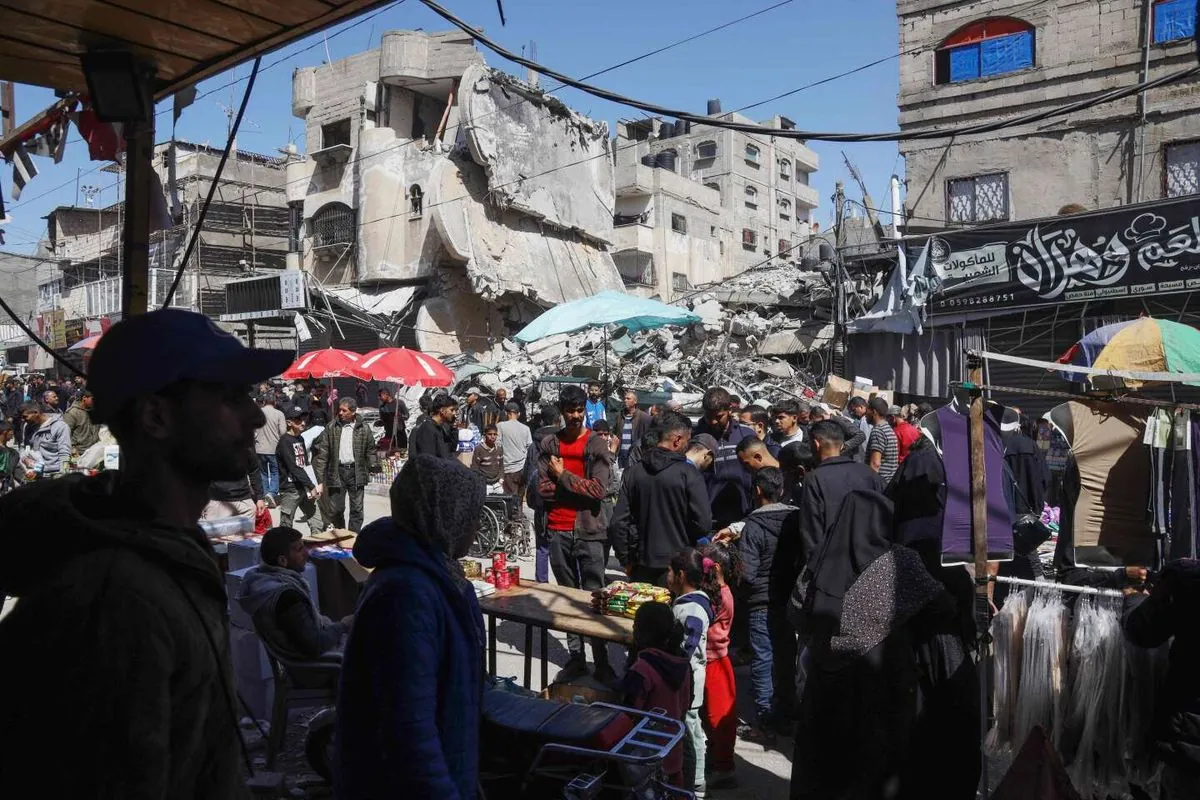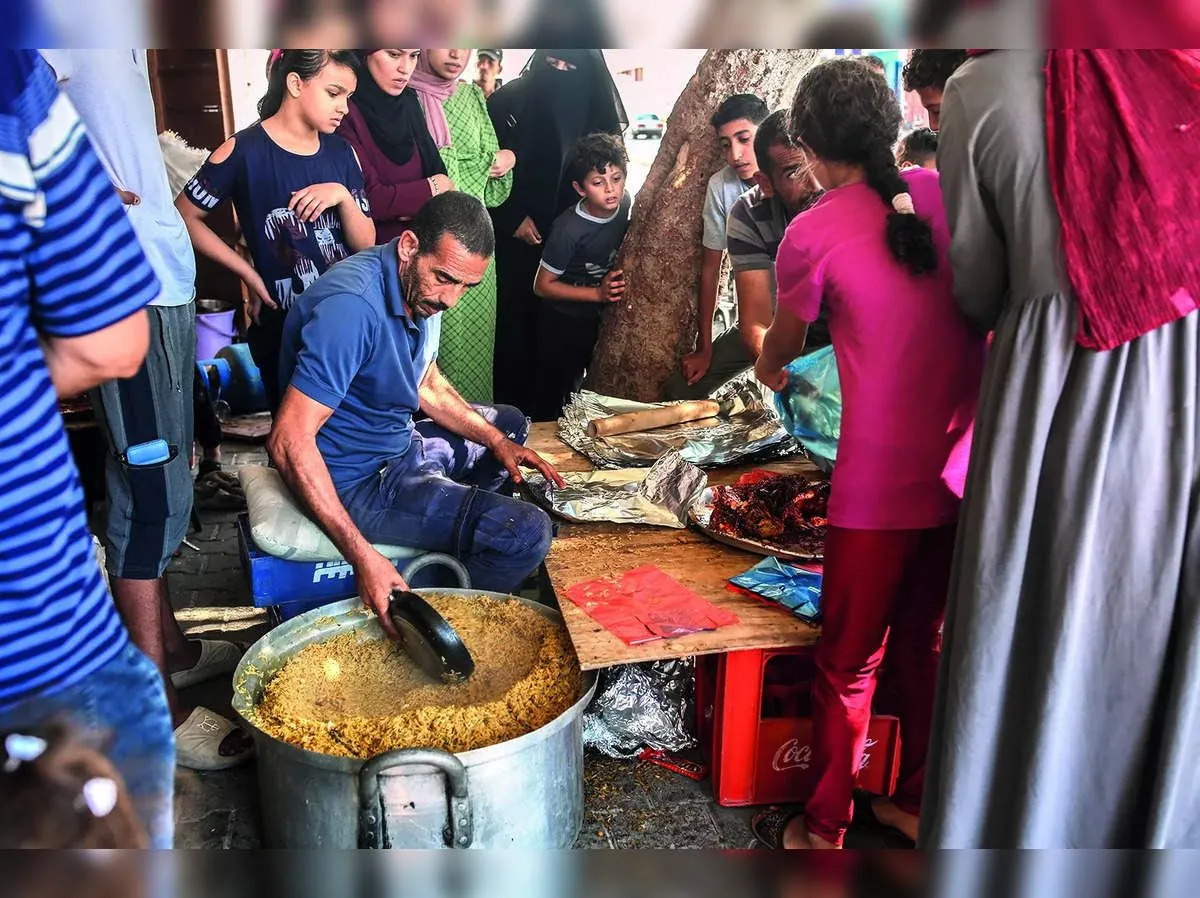Gaza's Economic Crisis: Soaring Prices Amplify War-Induced Hardships
Gaza faces severe food shortages and price hikes amidst ongoing conflict. Residents struggle with quadrupled costs of basic goods, relying heavily on aid as famine risk persists in the densely populated area.

The Gaza Strip, one of the world's most densely populated areas with about 5,500 people per square kilometer, is grappling with an unprecedented economic crisis. The ongoing conflict has exacerbated pre-existing hardships, leading to severe food shortages and skyrocketing prices that have put basic necessities out of reach for many residents.
In Gaza City's street markets, Palestinians face the stark reality of empty stalls and unaffordable goods. The cost of essential commodities has more than quadrupled since the conflict began nearly 11 months ago, intensifying the struggles of families already traumatized by the ongoing military campaign and humanitarian crisis.

Abu Issam, a resident from northern Gaza, expressed his frustration: "We do not have vegetables, meat products, eggs or anything. Where are the governments? Where are the people? They are supposed to watch out for us, to have mercy on the people."
The price increases are staggering. Three potatoes now cost 150 Shekels ($41.01), compared to 2 Shekels ($0.55) for a kilogram before the war. A jar of honey that previously cost 25 Shekels ($6.84) is now sold for 85 Shekels ($23.24). These price hikes are particularly devastating in a region where, even before the conflict, two-thirds of the population lived in poverty and the unemployment rate exceeded 45%.
Residents are now primarily relying on canned products delivered through aid, given the scarcity of fresh food. Abu Anwar Hassanein, another Gaza resident, highlighted the dire situation: "We are now wishing for a grape that we used to grow in our lands... Your son asks for money to buy some things... but now even 5 Shekels for your son are not enough to buy even one product."
The Integrated Food Security Phase Classification (IPC) reported 14 months ago that over 495,000 people in Gaza were facing the most severe, catastrophic level of food insecurity. This situation has likely worsened since then, with the ongoing conflict and restricted humanitarian access maintaining a high risk of famine.
The economic impact of the conflict is profound and far-reaching. Gaza's economy, heavily dependent on foreign aid, could take decades to recover. The territory's main water source, the Coastal Aquifer, is severely depleted and contaminated, with over 95% of Gaza's water undrinkable without treatment. The Gaza Strip's only power plant often operates at reduced capacity due to fuel shortages, further complicating daily life and economic activities.
Mohammed al-Katnany, a Palestinian laborer, summed up the situation: "We are unable to live, we are unable to buy anything. There's nothing, we are not working." The crisis is particularly concerning for vulnerable groups, with Hassanein adding, "You have the pregnant women, how are they supposed to grow their child while pregnant? How is she supposed to give birth? Diseases are everywhere."
The ongoing conflict has resulted in over 40,500 Palestinian casualties, according to local health authorities. Most of Gaza's 2.3 million residents have been displaced multiple times and face acute shortages of food and medicine.
Despite having one of the highest literacy rates in the Arab world at over 96%, Gaza's youth face a bleak future. With a median age of 18, the Strip has one of the world's youngest populations, but limited opportunities for growth and development.
As the conflict continues with no ceasefire in sight, the international community faces mounting pressure to address the humanitarian crisis in Gaza. The situation underscores the urgent need for a resolution that can bring stability and economic recovery to this beleaguered region.


































